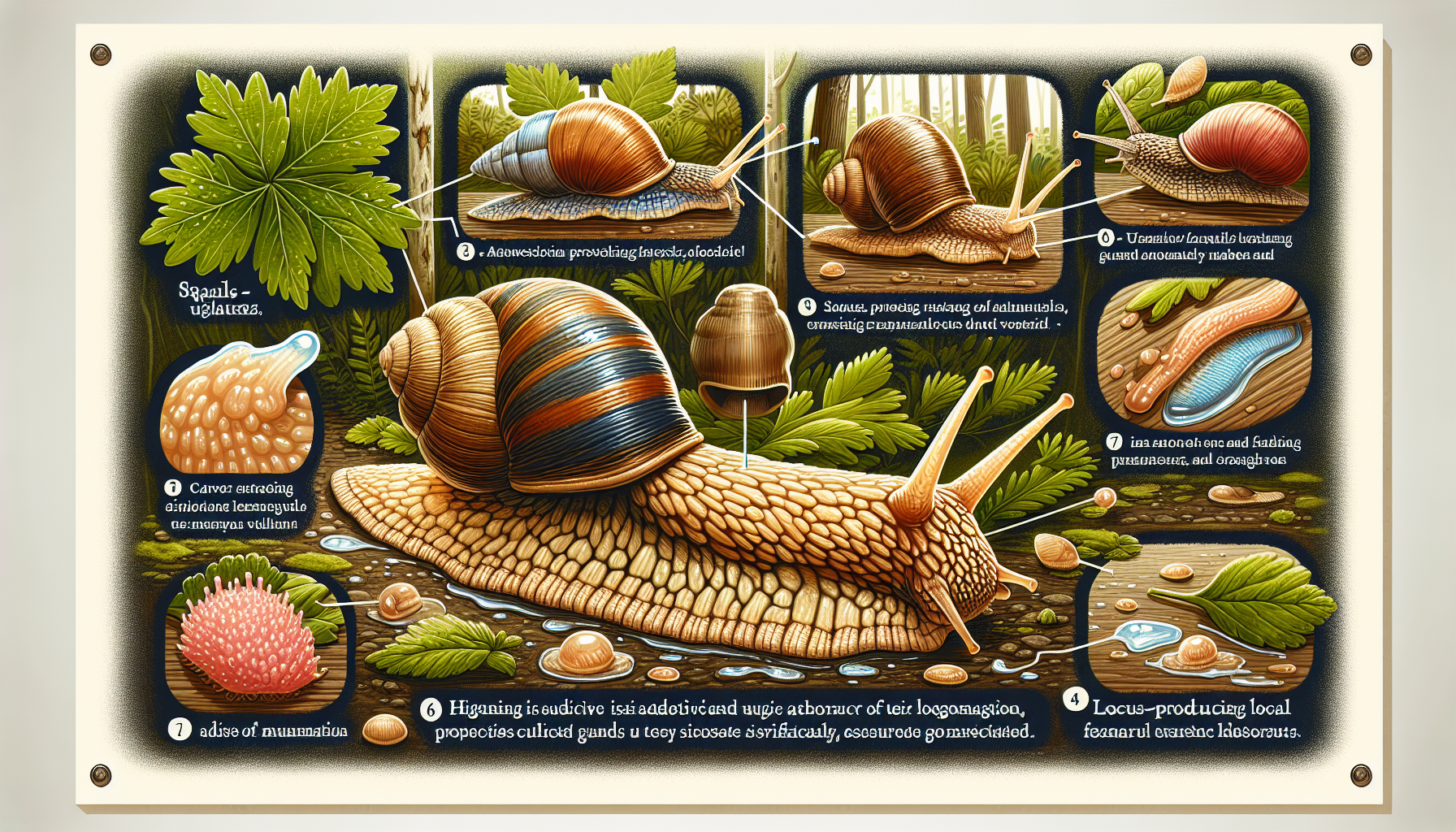Understanding the fascinating world of snails and slugs
For millions of years, these tiny creatures have gracefully maneuvered our planet, contributing to the balance of ecosystems in various ways. Today, in garden landscapes and tangled forest undergrowth, it’s fairly common to encounter snails and their shell-less counterparts, slugs, leaving a silvery trail behind them. This trail of slime, scientifically known as “mucus” has intrigued scientists and naturalists alike for many years.
How do snails and slugs produce mucus?
The mucus that snails and slugs produce is not unlike the saliva in our own mouths. It is produced by specialized cells in their foot, a muscle that they use to move around. This mucus serves several important purposes in the life of these mollusks, much like saliva helps us in digestion. Cumbersome as it may appear, this year-round slobbery habit is not something to be repulsed by, for it’s vital to their survival.
The wonder behind mucus production
Against the popular misconception, the mucus produced by snails and slugs is not inherently slimy or gross. It is remarkably engineered by nature. This gooey substance is essentially a water solution of protein and sugar, known as a polysaccharide. It responds uniquely to differing pressures exerted on it; under low pressure, it flows freely as a fluid, and under high stress, it becomes thicker and stickier. Moreover, when it gets in contact with dry air, it hardens almost immediately. This bizarre “non-Newtonian fluid” property of slug and snail slime sets it apart from everyday liquids that we are familiar with, like water or oil.
The various roles of mucus in their survival
While walking in the park, you may notice slugs and snails leaving a slimy trail. Yet, they’re not just thoughtlessly slobbering all over the place. These creatures use mucus as a tool for locomotion, protection, and communication.
Primarily, the mucus layer allows the snails and slugs to move smoothly over rough terrain, without damaging their sensitive skin. They create a wave-like motion in their muscular foot, lubricated by the mucus, which propels them forward.
Secondly, if predators or unfavorable weather conditions arise, the snails and slugs can retreat into a dormant state. They use the mucus to seal the entrance to their shell, thereby protecting themselves. For slugs, who do not possess a protective shell, they can secrete a thicker, frothy mucus that deters predators due to its bitter taste.
Lastly, the mucus trail left behind by these creatures is not just physical remnants of their travel. It acts as a communication tool with other snails and slugs. Through these trails, they are able to follow each other, communicate reproductive readiness, and even identify if a predator is nearby.
Diving into the world of snails and slugs can reveal an astonishing level of complexity and adaptation. Though small and often overlooked, they possess a beautiful mechanism to aid their survival, communication, and interaction with the environment. As we understand more about them, it remains a testament to the intricate and fascinating balance of nature.
Sophia Martinez is a dedicated and compassionate animal welfare advocate and writer, who has been enriching the lives of pet owners and animal enthusiasts for over 15 years. At 48 years old, Sophia’s expertise spans a wide range of topics, from pet care and nutrition to wildlife conservation and ethical animal treatment. She holds a Bachelor’s degree in Veterinary Science from Cornell University, which laid the foundation for her deep understanding of animal health and behavior.
Sophia’s career as a writer began after years of working in animal shelters and veterinary clinics, where she discovered her talent for communicating complex animal care concepts in an accessible and engaging manner. Her desire to make a difference in the lives of animals led her to become a prominent contributor to a well-known online news platform, where she now serves as the lead writer for the animal category.
Through her insightful and informative articles, Sophia aims to educate the public on responsible pet ownership, the importance of preserving natural habitats, and the latest advancements in animal health research. Her work not only highlights the joys and challenges of living with animals but also advocates for a more compassionate world where all creatures are respected and valued.
In addition to her writing, Sophia is an active volunteer with several non-profit organizations focused on animal rescue and habitat conservation. She often shares her personal experiences with fostering animals and participating in wildlife rehabilitation programs, further inspiring her readers to get involved in animal welfare causes.
Sophia’s passion for animals and her commitment to advocacy shine through in every piece she writes, making her a trusted and beloved figure among animal lovers worldwide.


